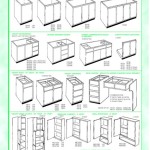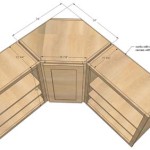How to Remove Oil Stains From Kitchen Cupboards
Keeping your kitchen cupboards clean and free of stains is essential for maintaining a hygienic and aesthetically pleasing cooking space. Oil stains, in particular, can be a common occurrence in kitchens and can be difficult to remove if not treated promptly. In this guide, we will provide you with step-by-step instructions on how to effectively remove oil stains from kitchen cupboards using various household items.
Step 1: Identify the Stain
Before attempting to remove the stain, it is important to identify the type of oil that caused it. Different types of oils require different cleaning methods. Common types of oils that may stain kitchen cupboards include cooking oil, olive oil, and vegetable oil.
Step 2: Blot the Stain
Using a clean cloth or paper towel, gently blot the oil stain to absorb as much of the excess oil as possible. Do not rub the stain, as this can spread it and make it more difficult to remove.
Step 3: Choose a Cleaning Solution
Depending on the type of oil and the surface of the cupboard, there are several effective cleaning solutions you can use:
- Dish soap and water: For light oil stains on painted or lacquered cupboards, a mixture of dish soap and warm water can be effective.
- Rubbing alcohol: Rubbing alcohol is a powerful solvent that can remove stubborn oil stains from most surfaces, including laminate and wood.
- Baking soda: Baking soda is a natural absorbent that can help to lift oil stains from porous surfaces such as wood or stone.
- Commercial degreasers: For heavy-duty oil stains, commercial degreasing products specifically designed for kitchen surfaces can be used.
Step 4: Apply the Cleaning Solution
Apply the chosen cleaning solution to a clean cloth or sponge and gently rub it onto the oil stain in a circular motion. Avoid using too much pressure, as this can damage the surface of the cupboard.
Step 5: Rinse and Dry
Once the stain has been removed, rinse the area with clean water and dry it thoroughly with a clean cloth or paper towel. If necessary, you can repeat steps 3-5 until the stain is completely removed.
Step 6: Protect the Surface
To prevent future oil stains, consider applying a protective coating to the surface of the cupboards. Waxes or sealants can create a barrier that makes it more difficult for oil to penetrate and stain the surface.
Additional Tips:
- Always test the cleaning solution on an inconspicuous area of the cupboard before using it on the entire surface to ensure it does not damage the finish.
- Avoid using harsh chemicals or abrasive cleaners, as these can damage the cupboard surface.
- If the oil stain has been allowed to set for an extended period, it may require multiple treatments to remove completely.
- For stubborn stains, consider consulting a professional cleaning service that specializes in kitchen cabinet cleaning.

How To Clean Sticky Grease Off Kitchen Cabinets Ovenclean

How To Clean Grimy Kitchen Cabinets With 2 Ingredients

How To Remove Grease From Kitchen Cabinets 3 Methods Bob Vila

How To Clean Grease From Kitchen Cabinets Trends Wood Finishing
:max_bytes(150000):strip_icc()/ways-to-clean-wood-kitchen-cabinets-3017289-01-765f893e7cca49a1ab72d7c49efdf518.jpg?strip=all)
Tips For Cleaning Food Grease From Wood Cabinets

How To Clean Kitchen Cabinets Everyday Skate

We Tried 5 Methods To Clean Greasy Wood Cabinets And The Winner Is Ridiculously Effective Kitchn Cleaning Kitchen

I Have A Complete Mess Of Cooking Oil Inside Cabinet Help Hometalk

How To Clean White Kitchen Cabinets 3 Best Ways Avoid Abbotts At Home

How To Remove Greasy From Kitchen Cabinets Home Cleaning Tips
Related Posts








